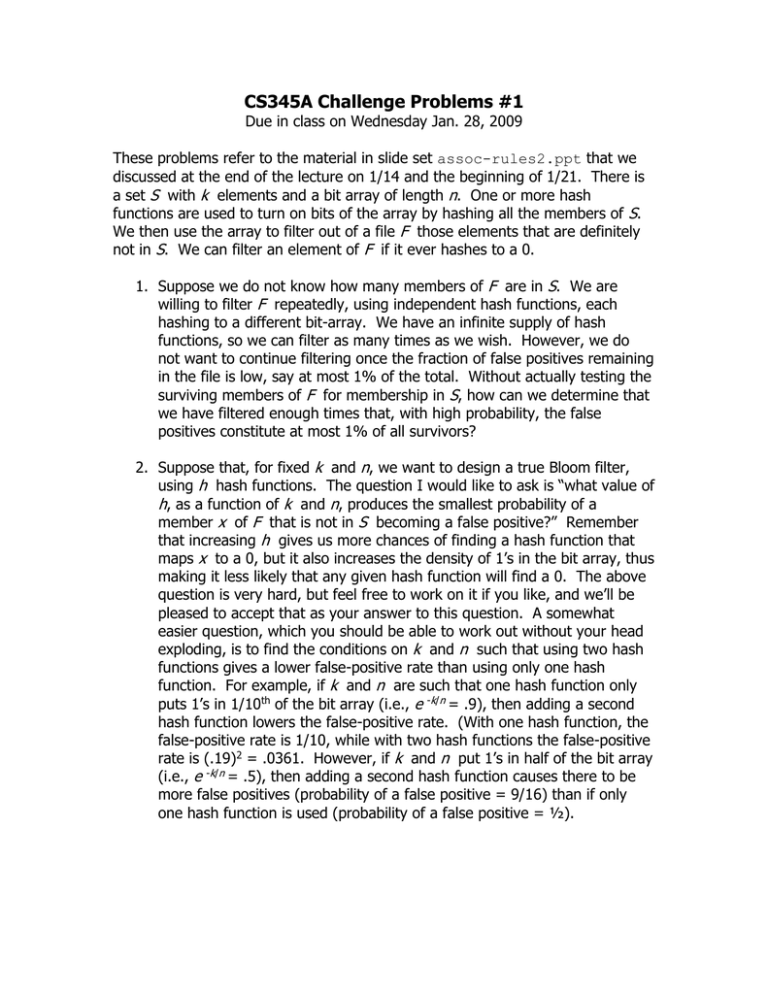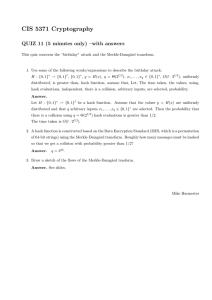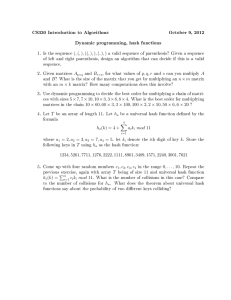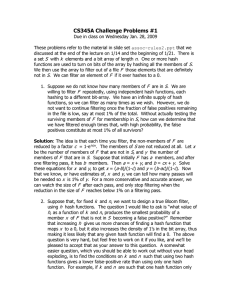CS345A Challenge Problems #1
advertisement

CS345A Challenge Problems #1 Due in class on Wednesday Jan. 28, 2009 These problems refer to the material in slide set assoc-rules2.ppt that we discussed at the end of the lecture on 1/14 and the beginning of 1/21. There is a set S with k elements and a bit array of length n. One or more hash functions are used to turn on bits of the array by hashing all the members of S. We then use the array to filter out of a file F those elements that are definitely not in S. We can filter an element of F if it ever hashes to a 0. 1. Suppose we do not know how many members of F are in S. We are willing to filter F repeatedly, using independent hash functions, each hashing to a different bit-array. We have an infinite supply of hash functions, so we can filter as many times as we wish. However, we do not want to continue filtering once the fraction of false positives remaining in the file is low, say at most 1% of the total. Without actually testing the surviving members of F for membership in S, how can we determine that we have filtered enough times that, with high probability, the false positives constitute at most 1% of all survivors? 2. Suppose that, for fixed k and n, we want to design a true Bloom filter, using h hash functions. The question I would like to ask is “what value of h, as a function of k and n, produces the smallest probability of a member x of F that is not in S becoming a false positive?” Remember that increasing h gives us more chances of finding a hash function that maps x to a 0, but it also increases the density of 1’s in the bit array, thus making it less likely that any given hash function will find a 0. The above question is very hard, but feel free to work on it if you like, and we’ll be pleased to accept that as your answer to this question. A somewhat easier question, which you should be able to work out without your head exploding, is to find the conditions on k and n such that using two hash functions gives a lower false-positive rate than using only one hash function. For example, if k and n are such that one hash function only puts 1’s in 1/10th of the bit array (i.e., e -k/n = .9), then adding a second hash function lowers the false-positive rate. (With one hash function, the false-positive rate is 1/10, while with two hash functions the false-positive rate is (.19)2 = .0361. However, if k and n put 1’s in half of the bit array (i.e., e -k/n = .5), then adding a second hash function causes there to be more false positives (probability of a false positive = 9/16) than if only one hash function is used (probability of a false positive = ½).








